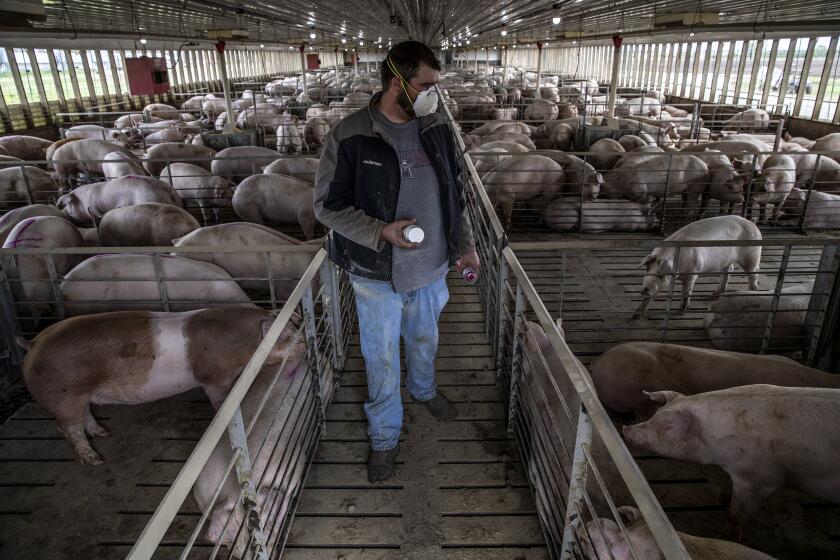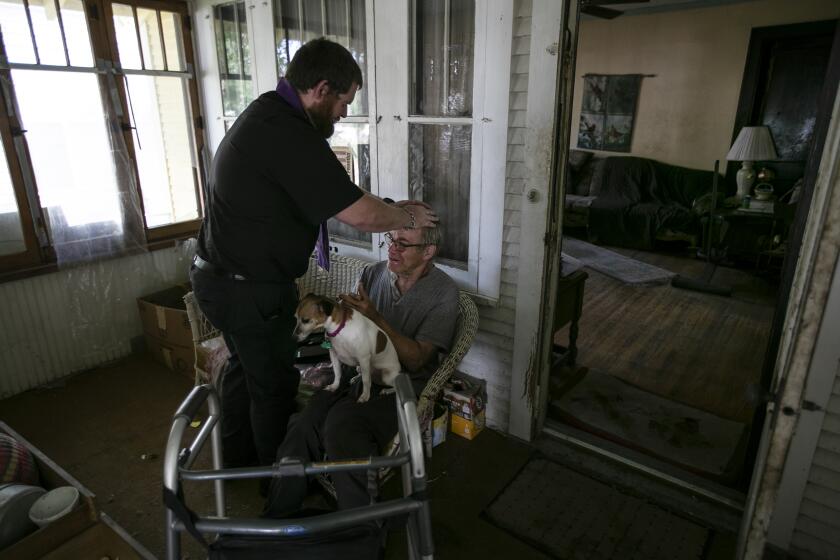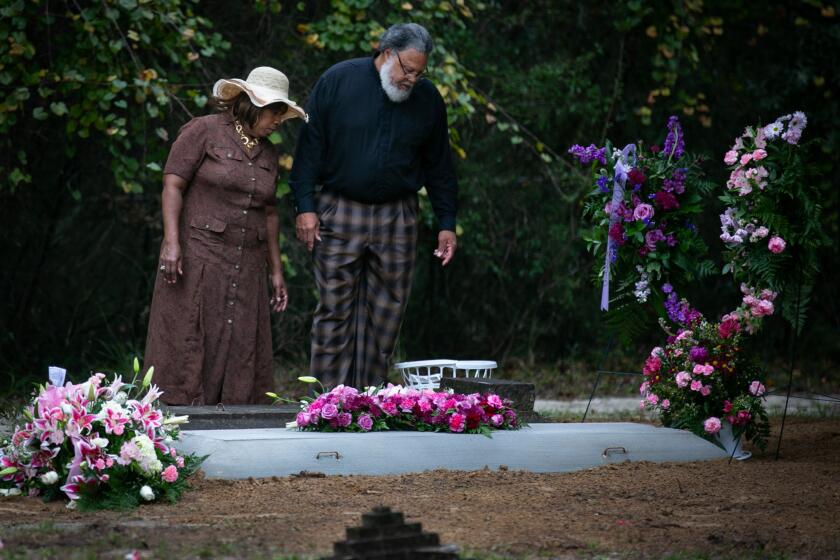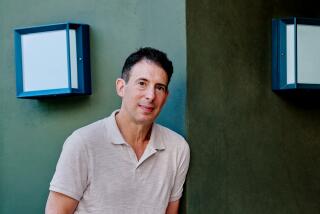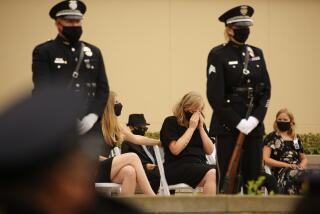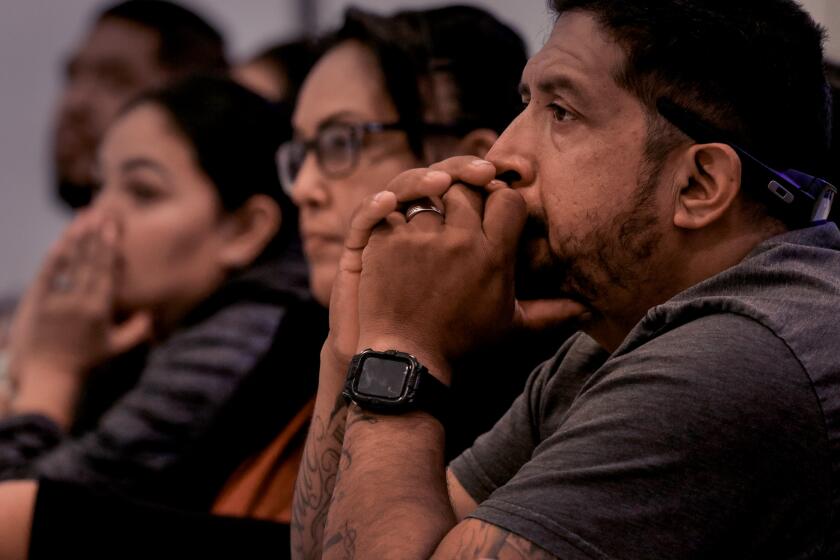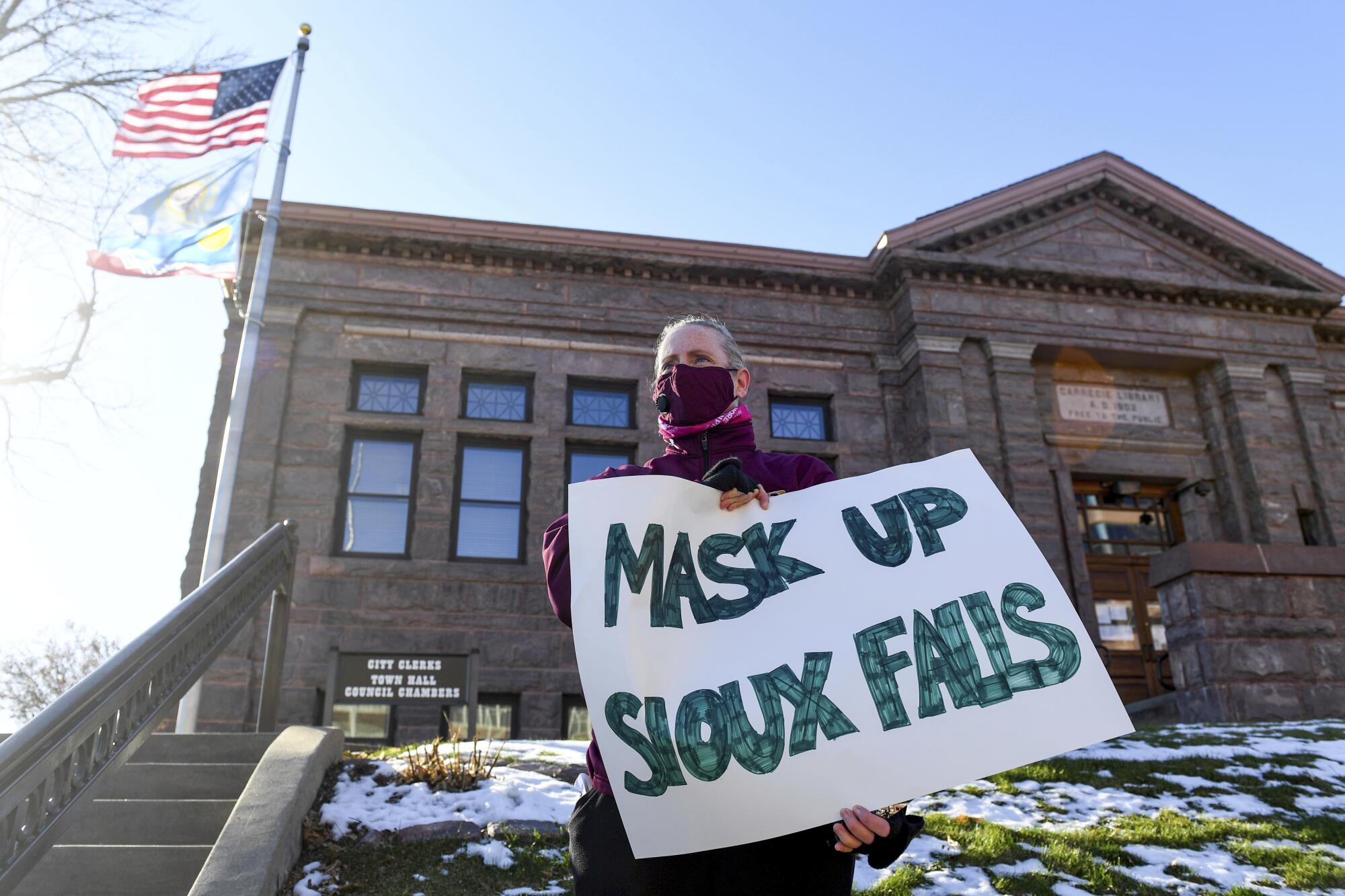
SIOUX FALLS, S.D. — Eight months ago, Sujeet Urwan locked himself in a spare basement room, muscles aching as he paged through his red Bible, trying to make sense of fever and fatigue that felt like no other.
The coronavirus was still new in South Dakota. Nearly everyone he knew with it were Bhutanese refugees like him who worked at the Smithfield pork plant. His two brothers, who spent their days packing and shipping processed meat, fell ill. So did his parents.
The spring surge of the virus at the factory of 3,700 — still among the worst outbreaks in American workplaces — killed four people and infected 1,294.
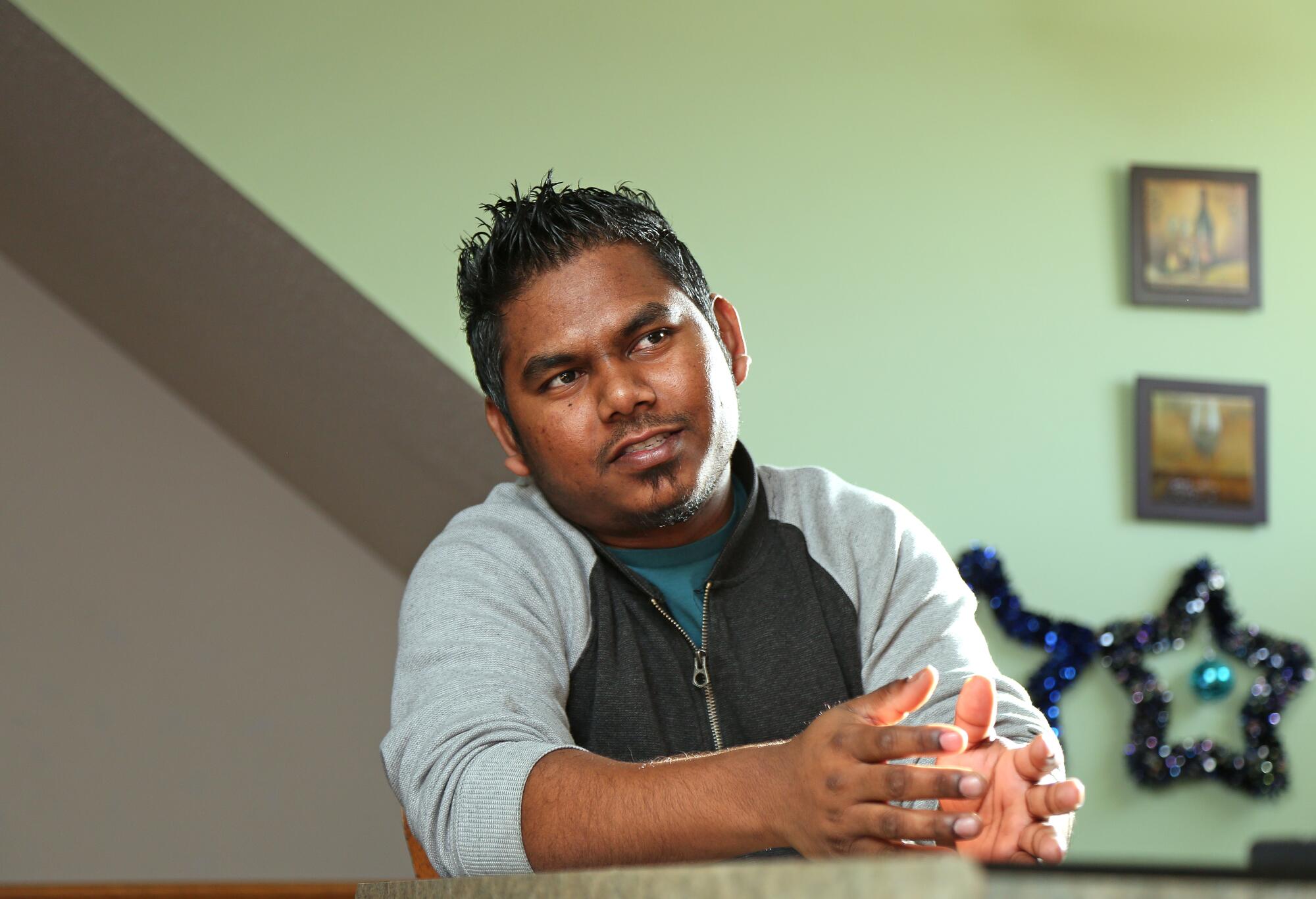
But outside of the immigrants who held a bulk of the factory’s jobs, COVID-19 for months seemed to barely touch this mostly white, largely conservative city of 188,000. As much of the nation turned to masks and shutdowns, packed bars, indoor rodeos and concerts went on in Sioux Falls. Testing sites closed. The governor became a hero among the right for resisting stay-at-home orders. It seemed a strange and surreal tale of two cities.
“We took the virus very seriously,” Urwan, 31, said recently as he packed his lunch bag with rice and pork curry for another night shift fixing motors used for slaughtering hogs. “But it felt like for a long time that everyone else was not.”
South Dakota’s coronavirus rates are now among the worst in the world. One in 10 people in this sparsely populated state have had the virus, with many more of the untested likely infected. In a country that has struggled to curtail the virus even as vaccines now arrive, this windy city, where the Plains and Midwest meet, faces more acute challenges and a reckoning over what it did and didn’t do.
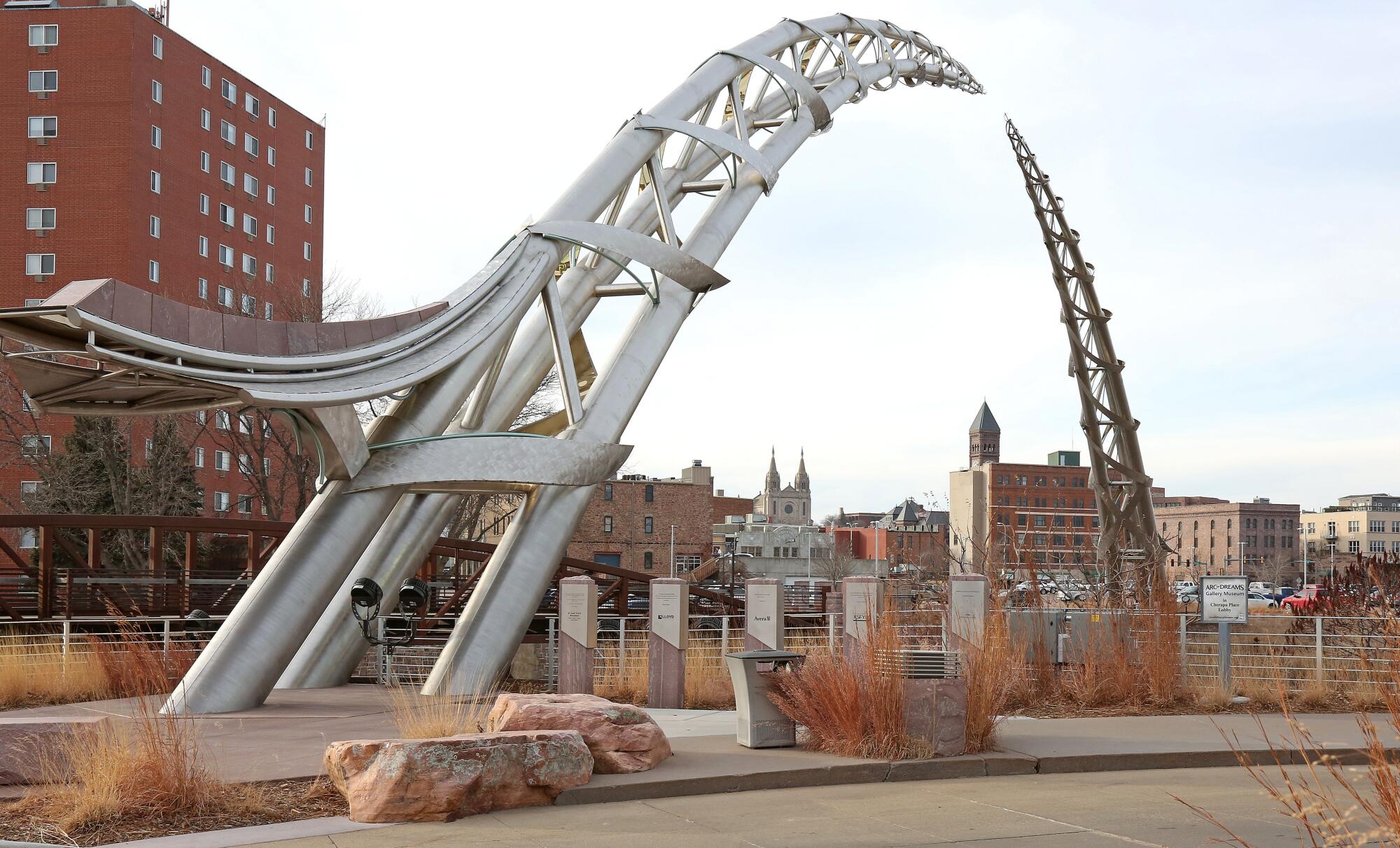
Sioux Falls is a small portrait of a nation, a place of many languages, colliding politics, frontier resolve, suspicion and stark differences over how to stop a pathogen that arrived early and has since hit hard. Protests rage in the city council meetings over masking and social distancing. Hospitals struggle to keep open ICU beds. Leaders wonder if residents will line up for shots. Refugees, meanwhile, are still blamed for the virus from a plant that now has some of the strictest safety rules in the region.
“We’ve been a guinea pig of this pandemic, every chapter in it,” said the city’s Republican mayor, Paul TenHaken, who admitted he once doubted how bad it would get. “We had a huge community outbreak that hit immigrants. We saw racism, with businesses saying you were a bigger risk if you were a refugee. We didn’t wear masks for months and carried on. Now we’re in this surge and fatigue.”
It fell hard on those like Urwan.
He was born in Bhutan to parents who crossed the border to Nepal after his father violated intermarriage laws by wedding an Indian woman. Urwan earned a degree in physics and taught algebra to middle schoolers. When he landed in Sioux Falls eight years ago, he worked at a paper carton factory for $300 a week. He quit and went to Smithfield, the city’s fourth-largest employer, more than doubling his salary with a union job working the line for the nation’s largest pork-seller.
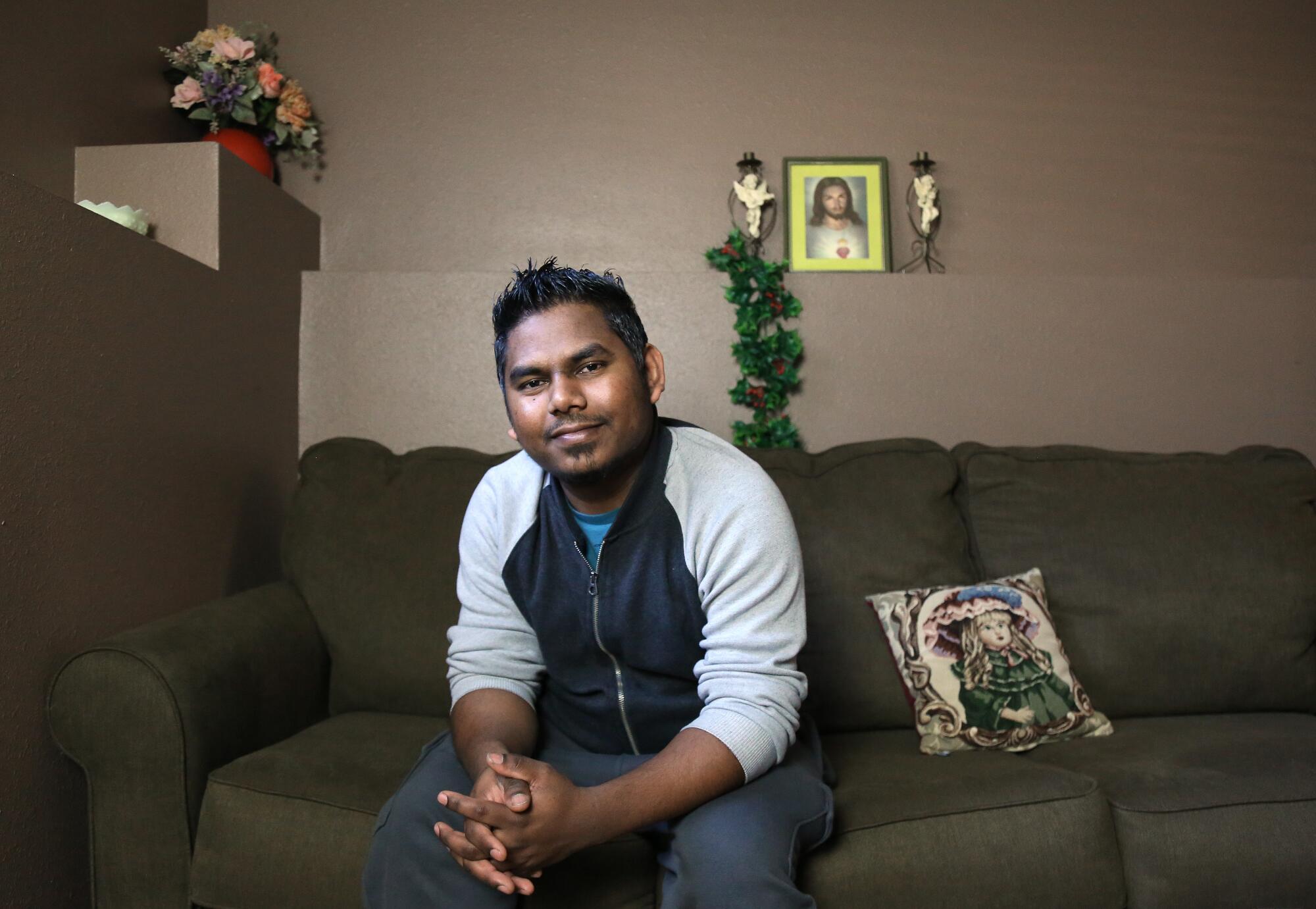
It wasn’t a dream, but it wasn’t failure either. It gave him the money to buy an SUV, a three-floor townhouse and raise a son who’s now 7. The company promoted him and paid for English classes and tuition at South Dakota State University, where he’s a junior in electrical engineering. Urwan now roams the mechanic’s garage-like floor of Department 63, scouring the 45-acre property each night for broken transponders and faulty industrial-size motors. His wife, Chandra, works days packaging pork.
Through Smithfield, Urwan expanded his world. He befriended co-workers from Ethiopia and Sudan. In his new position, shifts no longer felt like a chore. They exercised his mind. Part time, he made more than working overtime on the line.
But then the virus came “like a slow tornado” in March.
The rumors of a few sick. Then hundreds diagnosed. The company shut its doors in mid-April, when its 644 cases made up more than half of those in South Dakota. Urwan kept going in to fix machines. The fever struck him in May. When the factory reopened, he was still in his basement with his red Bible. After he recovered, he joined three friends from work to bike along the Big Sioux River and posted a YouTube video to celebrate life out of quarantine.
Today, Urwan keeps masks in his locker, dons a face shield and does a temperature scan before heading into work on North Weber Avenue, where livestock rolls in by the truckload and the dirt parking lots, once eerily empty, are packed day and night. Hand- and foot-operated sanitizer pumps abound. Break times are staggered and lunch tables are separated by barriers.
He could once name every co-worker who was sick. Now, he doesn’t know any.
“Most people at work are done with the disease,” he said. “Maybe we are immune now.”
The coronavirus feels so distant that he reminds himself of its dangers by tuning in to the news.
He recently saw the chyron flash on his TV screen before heading to the night shift: The nation was approaching 300,000 dead.
::
The number that evening was on minds in city hall, just south of the factory where some of the city’s first deaths began. The Smithfield outbreak once brought arguments over stay-at-home rules for nonessential workers. A brief closure of restaurants followed before they reopened in mid-May with capacity limits, a restriction that lasted a few weeks before all returned to normal.
Taking further precautions seemed unworthy of discussion when the council meeting started.
It had been a month since the town — under pressure from its two biggest hospitals — reluctantly passed a mask mandate. Skepticism mixed with irony. Council member Christine Erickson voted against the mandate from the isolation in her bedroom after contracting COVID-19. She believed that the virus was real but that masks were a “personal choice” that could not alone stop it.
Many businesses outside of downtown refused to enforce the 60-day mask rule.
The debate tonight was on whether to extend the mask requirement until the spring. Every resident who lined up at the mic was maskless.
“Who really cares? People are tired of listening to COVID,” said one.
“A hoax,” shouted another.
The former chair of the county Republican Party described masks as a “biohazard” and enforcement of them a “religion” that went against the 1st Amendment.
A councilor wondered what any measures would do. Other states were seeing “grim death tolls,” too, he said, with lockdowns like those in California not solving the problem. “We’re all overestimating, apparently, our power to control this virus.”
Another speaker brought up the vaccine.
It could be “just water,” he said, or a “chip” implanted by the government.
In an interview afterward, the mayor lamented the state of things.
“For whatever reason, masking has become a lightning rod. It shouldn’t be,” he said. “It’s difficult for me to still hear people who call this all a hoax. It’s certainly not.”
Sara Telahun wanted to be at the meeting. She skipped it out of fear of catching something. Her family avoided the disease for so long. She couldn’t risk bringing it home.
A 23-year-old who just graduated from Augustana University, she plastered her red Ford with posters and drove toward the plant’s smokestacks last spring when caseloads were rising. “We don’t need more cases from Smithfield!” they said. “Our health is essential!”
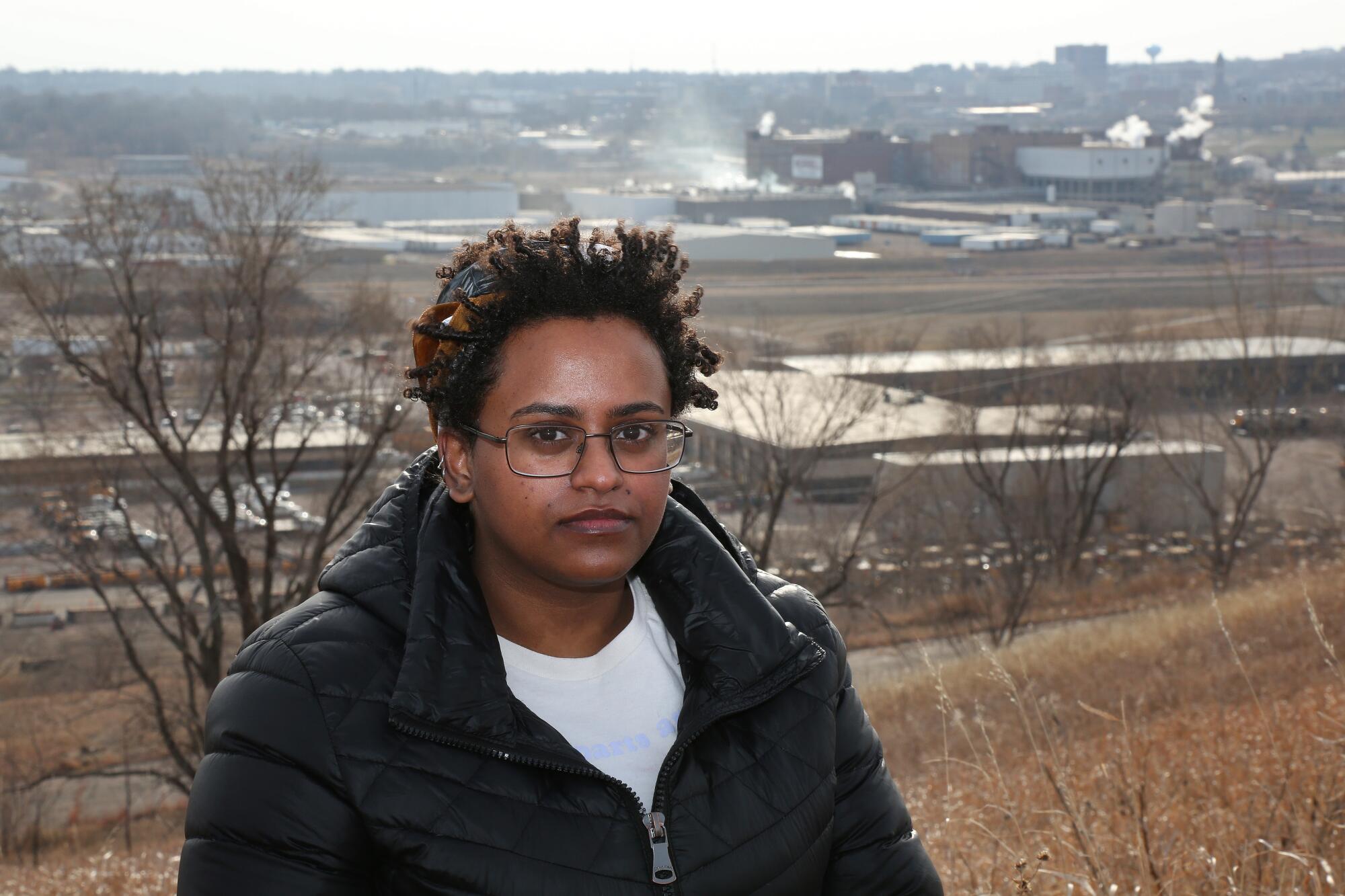
Her mother, a 20-year packaging department veteran who got the job after moving from Ethiopia, took vacation days to stay home before the factory shut down most operations in April. Telahun grew up around Smithfield workers and their kids. Many lived in Ethiopian communities on the city’s east side. They studied at Lincoln High, prayed at the Ethiopian Orthodox church, and this year became activists.
Calling themselves Children of Smithfield, they shared news through Facebook in the early, confusing days of the virus when breathing fresh air even seemed a danger. The Sioux Falls chapter was quieter now, with bigger fights taking place in towns like Greeley, Colo. There, families of workers at JBS, another meat company, struggled to get payments after loved ones died after catching the disease at the factory.
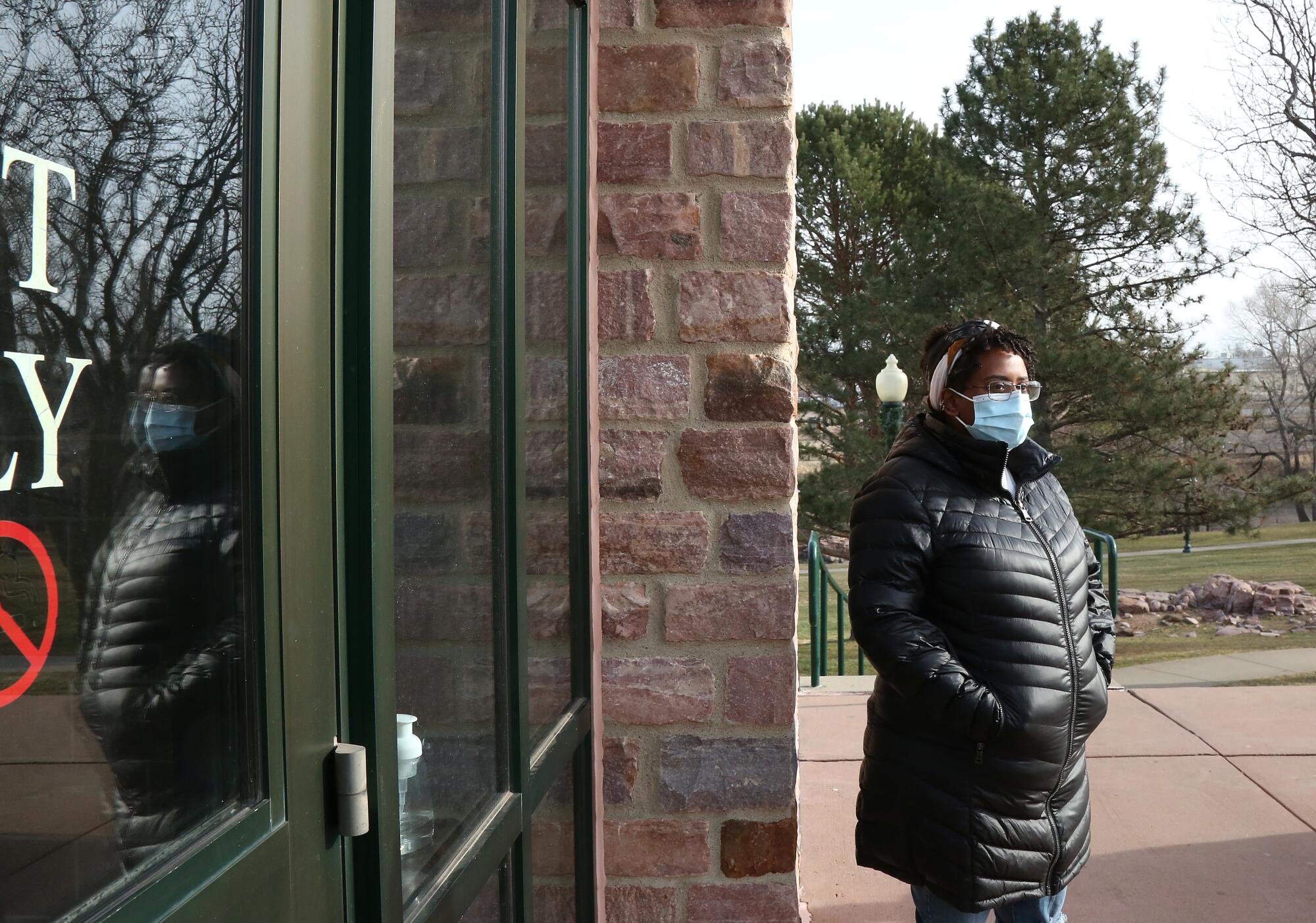
Still, Telahun felt the tug and pull of the virus in Sioux Falls. And now, with the patterns of the illness changing, she was more worried about her peers and strangers on the street than factory workers.
Her younger sister, a college student, had just returned home, saying campus was “a prison” for its strict rules. Telahun reminded her of what happened at the plant.
College friends would post Instagram stories of themselves at downtown clubs. Telahun, who just finished a nonprofit job administering grants to South Dakotans who had gotten sick with COVID-19 or lost work, was one of the few who mostly stayed home and kept masks on hand.
“People are shutting down entire lives,” Telahun said. “We’re out here in Sioux Falls like there is no problem. Didn’t we learn before?”
A few weeks ago, she went out with a sister to get groceries at Aldi. In line, she overheard a conversation between two shoppers.
“You know, if it wasn’t for those Smithfield workers, we would have been fine,” one said to the other.
Telahun made a face of anger and disgust.
“You need to put your masks on,” she said. “This is the law.”
She had more to add but held it back.
Mom, 49, was safer at work than before. Family was healthy. The vaccine was coming. That’s what mattered.
::
Smithfield has been in Sioux Falls for more than a century. Many locals still affectionately call it “Morrell’s,” short for its former name of John Morrell before the Virginia-based corporation bought it out. Growing up in this hog town meant getting to know those who grew old, worked its killing floors, raised families on factory wages.
The company is a point of pride. Over the last few decades, its once majority of white workers were replaced with immigrants who together speak more than 80 languages. Pay and benefits are higher than most other jobs new refugees can get. Overtime is easy to come by, as are promotions and schedule changes.
The coronavirus outbreak hit Smithfield with the fierceness reminiscent of the union contract battles, harassment lawsuits and workplace injuries that came before. Yet it was bigger and more dangerous.
The company has tried to make amends.
In September, the Sioux Falls plant hired for a new job in community development. Tolcha Mesele, a 32-year-old Ethiopian American who was born in a Kenyan refugee camp, worked his way up over the last decade from shipping and receiving in Department 22 to managing the warehouse. Now, he’s the face of the company, especially in the immigrant communities of its workers.
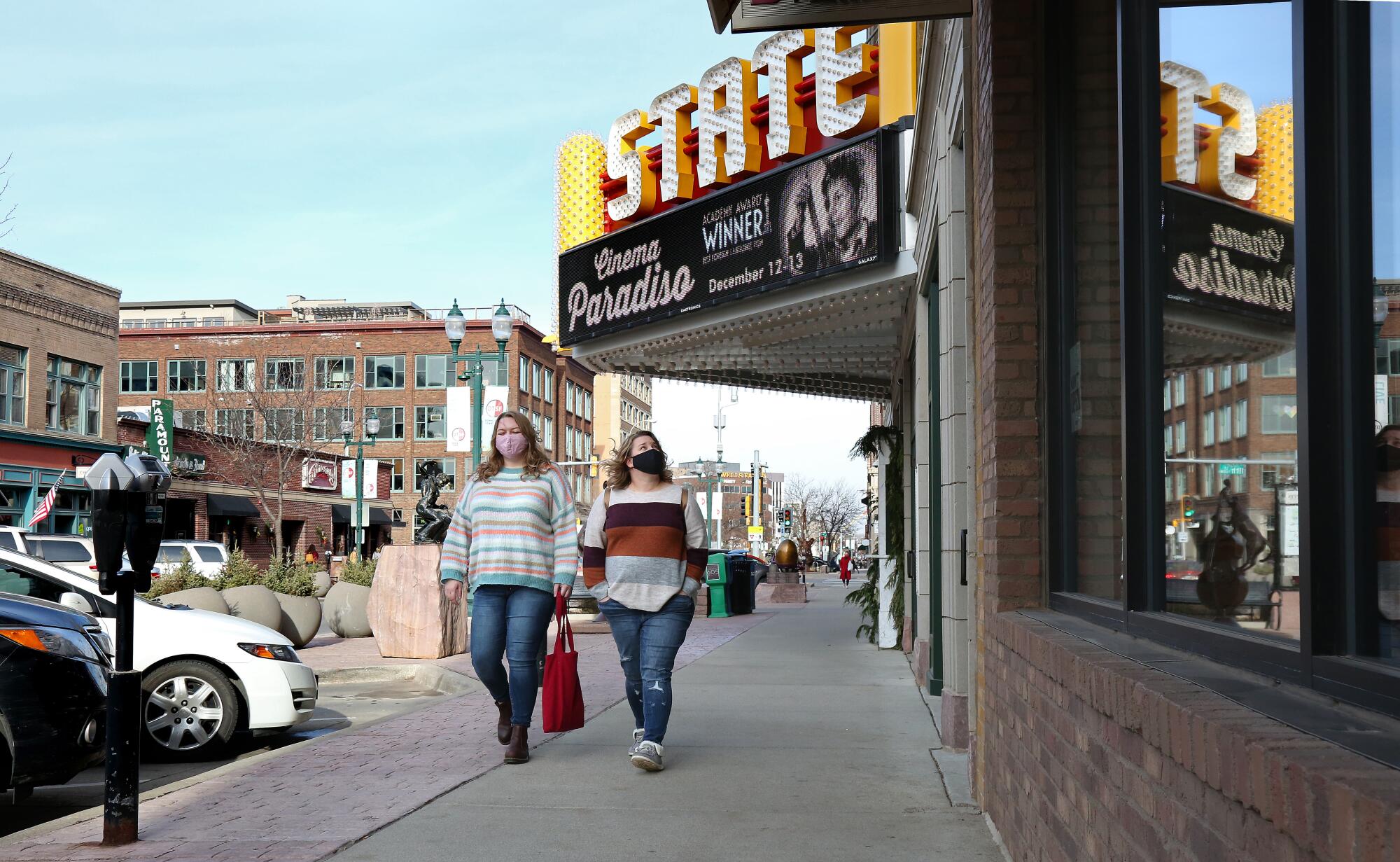
This month, Mesele presented a $400,000 gift from Smithfield to a new mental health and addiction center being built downtown, and arranged a donation of 3,000 packages of bacon and ham to a local Christmastime charity for hard-pressed families. The unemployment rate in South Dakota has dropped back to pre-pandemic levels. But in Sioux Falls, immigrant advocacy groups still get calls from people who lost work or got sick months ago and are still falling behind on rent or who struggle with bills.
“I am surprised at how little people bring up Smithfield and COVID now,” Mesele said. “But back home in the community, people are still concerned. They are seeing the toll in the news. And then they are seeing so much misinformation on Facebook on this virus.”
He said he was dismayed at fights in the city over proven methods to prevent infections.
“There is this whole idea that masks are against our freedom and personal liberties,” he said. “It’s just not true.”
As the first vaccine vials rolled into Sioux Falls this month, Smithfield offered storage in ultra-low temperature freezers, saying it could help distribute them to food and agricultural workers as more doses become available.
It’s unclear if anyone has taken the company up on the offer.
Urwan was driving to work when he heard the vaccine news on the radio. He listened intently to the words of Sandra Lindsay, the 52-year-old nurse in Queens who got the first shot, saying she felt “like a healing is coming.”
He smiled, thinking what it could mean. The small inconveniences, like trying to spot breakers through the fog that appeared on his face shield at work, would one day go away. The bigger worries, like the elderly Bhutanese couples from church he no longer saw as they stayed put at home. His son, Suchan, who had a chronic kidney disease that could make a COVID-19 infection worse.
Urwan wondered, too, how much he needed the vaccine if he had already been sick. But he thought to eventually take it anyway.
It had been a long year. Christmas was coming, but people were still sick, and Sioux Falls, like the nation, was settling in for a long winter. He’d usually go each night before the holiday to the homes of family friends, where he and his brothers would set up in living rooms to sing carols in Nepalese before feasting on dumplings.
Those days were largely no more. He now mostly sang alone or with his siblings in his basement, where Urwan had set up a microphone plugged into his Mac desktop to upload recordings online.
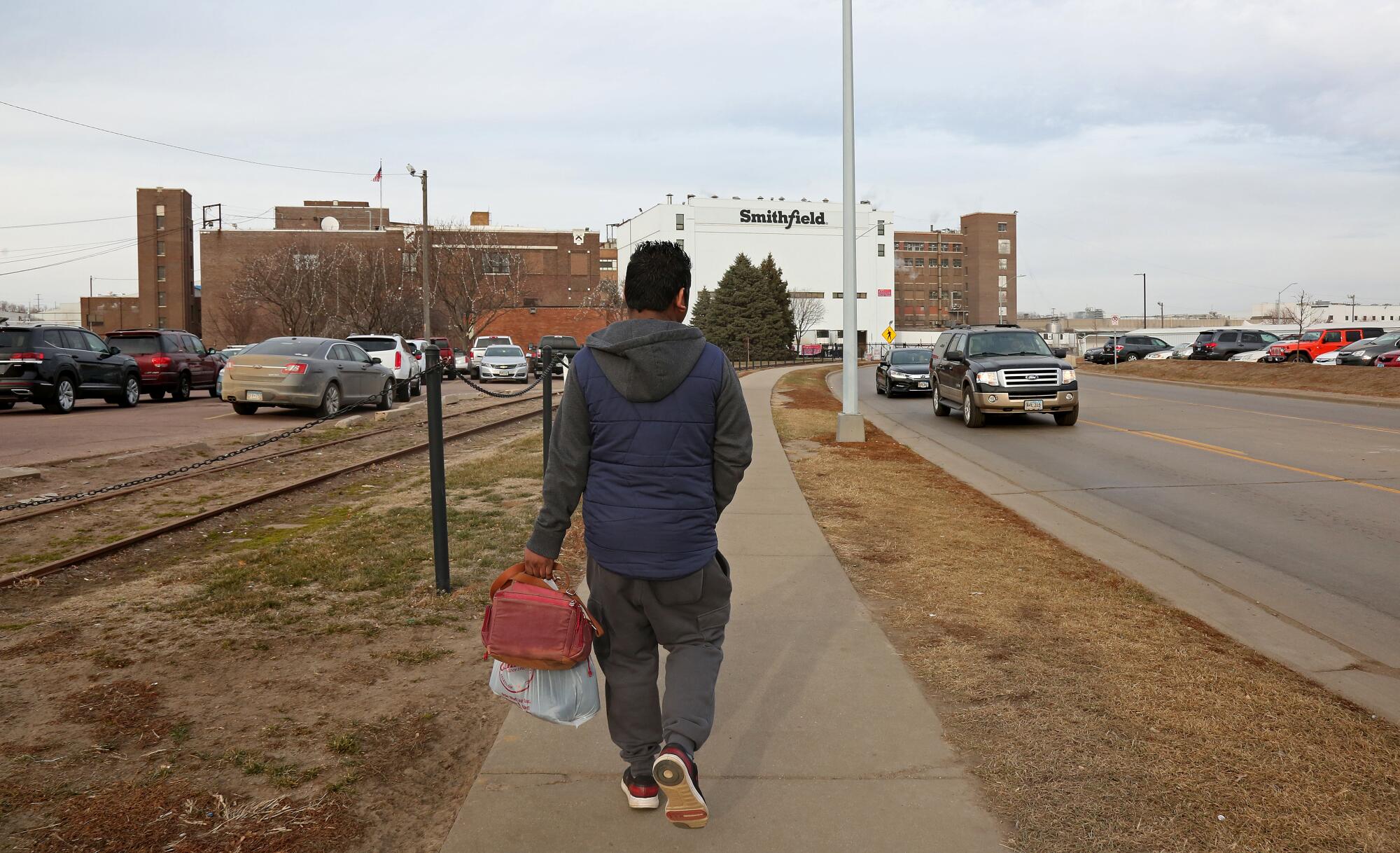
One of the tunes was Aayo Badaa Dina. He thought it appropriate for this end of this year, when life changed in ways never expected, and could next year become a little more normal again.
The phrase, which talked about Jesus’ birth, had many more meanings now. Aayo Badaa Dina. A Big Day Has Come.
(This is the third in a series of occasional stories on the coronavirus’ effect on the Sioux Falls Smithfield plant and its workers.)
More to Read
Sign up for Essential California
The most important California stories and recommendations in your inbox every morning.
You may occasionally receive promotional content from the Los Angeles Times.

